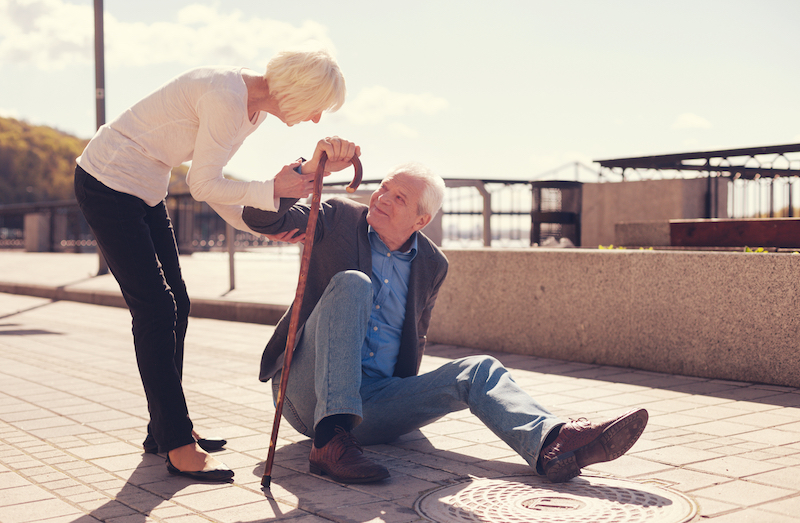Lifestyle modifications and physical therapy can reduce your risk of falling later in life
If you happen to be over the age of 65 or have a loved one in that age group, you are probably aware of the risk of falls and the damage that can be done if one occurs. Awareness is essential for preventing falls, but all the information out there can be overwhelming and lead to a greater fear of falling, which can actually have a negative effect. With that in mind, we’d like to explain some basic steps that can reduce not only your risk, but your fear of falling as well.
Falls are the leading cause of injury for older Americans, and approximately one-third of adults aged 65 and over falls each year. When one falls, there’s a good chance bones will be broken. The femur (the thigh bone that meets with the socket in the pelvis) is often fractured as a result of these falls. Other common fractures include the spine, forearm, leg and ankle. Falls can occur for any number of reasons, but they are usually due to a combination of internal and external factors. Poor vision and/or balance in an environment with bad lighting, bad footing or slippery surfaces can all be a recipe for a fall.
If a fall does occur, many individuals go on to develop an even greater fear of falling, even if they don’t get injured. This can cause them to limit their activities, which leads to reduced mobility and loss of physical fitness. Worst of all, this process can become a vicious cycle that actually increases the risk for falling.
Overcome the Fear of Falling & Improve Your Physical Fitness
What’s most important to realize is that falling should not be seen as an inevitable part of aging. By being aware of your risk and making lifestyle adjustments both in and out of your home, you can significantly reduce your risk of falling. Below are some fall-prevention tips to help you stay on your feet and injury-free:
- Stay physically active, since good fitness can help prevent falls
- Wear shoes with nonskid soles, and consider getting Velcro or spyrolaces
- Conduct a walkthrough of your home (with someone else if you’re uncertain) to identify possible problems that may lead to a fall, then make necessary changes
- Install handrails on both sides of stairways, avoid clutter and items on the floor
- Get your eyes checked once a year, and get adequate calcium and vitamin D
- If you’re taking numerous medications, learn the side effects and if there are any interactions that can increase your risk of falling
- Take your time, be patient and ask others for help with difficult, risky tasks
Beyond Eduction & Lifestyle Modifications, Our Balance Program Can Really Help
Aside from making these important lifestyle adjustments, physical therapy is another positive means to reduce your risk for falls. A physical therapy program will help to improve your strength, flexibility, balance and overall fitness, all of which will make you more capable of navigating your daily life with a lower fall risk.
To highlight how physical therapy can help prevent falls in older adults, a recent
study compared resistance (strengthening) exercises to aerobic exercises, both of which are commonly prescribed by physical therapists. Researchers concluded with the following:
Adding resistance exercise to aerobic exercise improves factors associated with an increased risk of falls. However, both exercise regimes, combined or aerobic alone, are more effective than no exercise in the reduction of fall risk factors. Reference: https://www.ncbi.nlm.nih.gov/pubmed/27353246
So if you’re concerned with your risk for falling later in life,
contact us for a consultation and find out how we can help you keep your fall risk at a minimum.
NOTE: We have more information about our
Balance Program if you click here.

